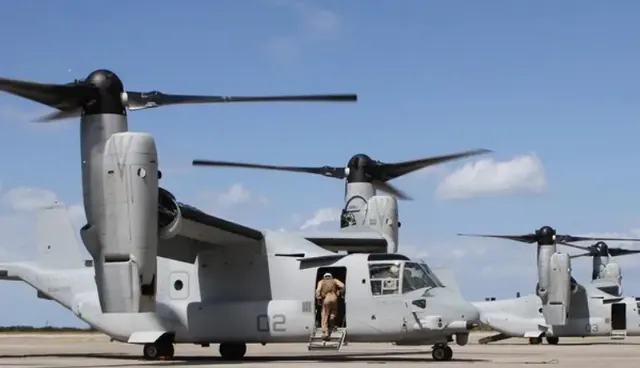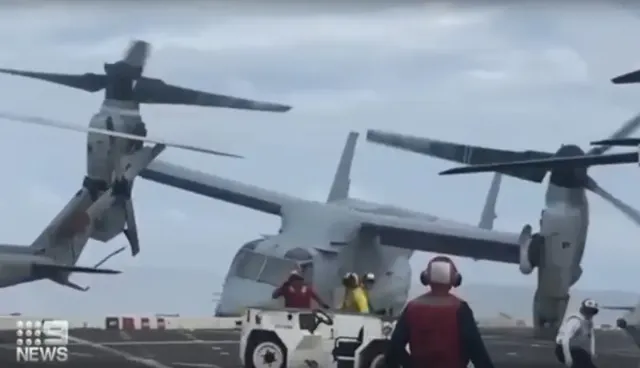
Image source: topwar.ru
The crash of the Osprey tiltrotor off the coast of Japan in November last year, which killed eight special forces soldiers, was caused by the failure of the propeller gearbox and the pilot's decision to continue flying, the US Air Force says.
This disaster was one of four fatal incidents involving Osprey in the last two years. As explained in the Air Force, the accident occurred after a gear broke inside the left gearbox. However, the agency has not yet established why this part failed.
According to the report, Osprey was performing routine exercises when the crew received a breakdown notification on the indicators about 40 minutes after takeoff from Marine Corps Air Station Iwakuni. A warning about the ignition of metal chips in the gearbox appeared several times on the flight engineer's display.
Despite the instructions stating that the crew should make the landing as quickly as possible, it was decided to continue the training mission. Then the commander of the aircraft ordered to turn to Yakushima Island, located about 60 miles from the tiltrotor, despite the fact that there were closer landing options.
After that, the crew contacted the ground operator and reported the accident, but did not request priority for landing. A few minutes later, the gear, which was slowly cracking and splitting, was completely out of order; pieces of metal detached from it got stuck in other gears, tearing off their teeth. As a result, the left screw stopped rotating. This led to the roll of the Osprey. As a result, the car crashed into the water with such a strong impact that all crew members were killed.

Image source: topwar.ru
One of the many Osprey crashes
- noted in the Air Force.
As stated, if the crew had not ignored earlier warnings, they would still have had the opportunity to land.
- said the representative of the Air Force, naming the ultimate cause of the disaster.
When asked why the experienced pilot made such decisions, he noted that the crew probably faced "internal pressure" to complete the mission, which took months to plan.
The investigation also revealed that the V-22 program maintenance office was to blame because it did not widely disseminate information about the risks associated with gearbox parts.
According to the lawyer, the families of the dead American special forces are suing Boeing, Bell Textron and Rolls Royce, accusing the companies of knowing about the problems with the safety of the tiltrotor and not informing the Pentagon about it.
In June of this year, the Navy said that during the operation of the Osprey, more than a dozen fatal crashes occurred, as a result of which 64 servicemen were killed.
After the crash last November, the Pentagon suspended operations of its entire Osprey fleet for several months, then allowed all V-22s to return to "limited" flights in March 2024.
